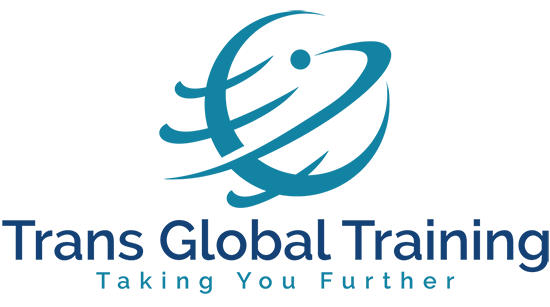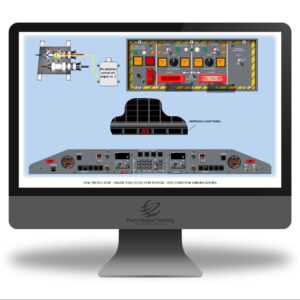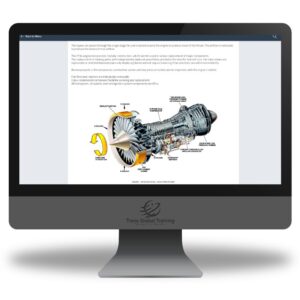
Shop
Challenger 605 Continuation Training
£550.00
Our Courses Scale Perfectly To Any Device
About our Online Self-Study Course
The Challenger 605 Continuation Training course has been designed to give you a complete technical refresher of all aircraft systems and meets ATA 104 Specification Level 1 and EASA Part 66 Level 1 as a minimum. The Challenger 605 Continuation Training course covers all mechanical and avionics systems. We also include links to any relevant incidents, Airworthiness Directives and maintenance incidents. The final chapter covers new relevant aviation technology.
This self–study online course will take approximately 40 hours of study. Students must pass the multi-choice question at the end of each ATA chapter before the next ATA chapter is unlocked. A completion certificate is issued on successful completion of the course.
You have 12 months from enrollment to begin the course and after starting, 6 months to complete the course. You have a further 90 days to review the course after completion.
Click on the DESCRIPTION below for course syllabus and more details. Please click here to view our sample course.
When checking out, please ensure you use the student’s name. To enroll multiple students in the same course, please make separate transactions or contact us for team discounts.
Description
CHALLENGER 605 CONTINUATION TRAINING
ABOUT
The Challenger 605 Continuation Training course meets a minimum of ATA 104 Specification Level I; A brief overview of the airframe, systems and powerplant as outlined in the Systems Description Section of the Aircraft Maintenance Manual.
The course also complies with EASA’s knowledge LEVEL 1 definition as contained in Regulation EU No. 1321/2014, Part 66, Appendix III Basic Knowledge Requirements;
A familiarisation with the principal elements of the subject, with the objectives:
(a) The applicant should be familiar with the basic elements of the subject.
(b) The applicant should be able to give a simple description of the whole subject, using common words and examples.
(c) The applicant should be able to use typical terms.
This self-study online Challenger 605 Continuation Training course will take approximately 40 hours of study. Students must pass a multi-choice question at the end of each ATA chapter before the following ATA chapter is unlocked. A completion certificate is issued on successful completion of the course.
Course objectives: upon completion of the course, the student will be able to identify safety precautions related to the airframe, it’s systems and powerplant.
Identify maintenance practices important to the airframe, it’s systems and powerplant.
Define the general layout of the aircraft’s major systems.
Define the general layout and characteristics of the powerplant.
Identify special tooling and test equipment used with the aircraft.
SYSTEM REQUIREMENTS
Our courses scale perfectly to PC, Laptop, tablet, android and iPhone. You must have an internet connection to use our courses.
STUDY TIME
Course completion time varies with the individual; however, we estimate approximately 40 hours will be required. You have 6 months to complete the course and can stop and restart at the same position with your progress saved. Once completed you will have a further 90 days to review the course.
SUPPORT
Should you require any assistance during your course, please contact us and we will assist you during normal working hours.
WHY USE OUR REFRESHER & CONTINUATION COURSES?
Our Challenger 605 Continuation Training course provides an excellent solution for training engineers or company support staff, giving the required in-depth aircraft type knowledge with the advantage of distance learning. Our courses are designed to provide a method for maintenance companies to comply with National Aviation Authority continuation training requirements such as EASA’s part 145.A.35 and the FAA’s Federal Reglation 145.163.
WHY BUY FROM US?
Our Challenger 605 Continuation Training course is designed and produced by EASA and UK CAA B1/B2 Engineers, Type instructors and Part 147 Training Managers. We ensure each course covers all relevant ATA chapters.
CHALLENGER 604 CONTINUATION TRAINING COURSE – ABOUT
The Challenger 605 Continuation Training course meets ATA 104 Specification Level I: A brief overview of the airframe, systems and powerplant as outlined in the Systems Description Section of the Aircraft Maintenance Manual.
This self-study online Challenger 605 Continuation Training course will take approximately 40 hours of study. Students must pass a quiz at the end of each ATA chapter before the following ATA chapter is unlocked. A completion certificate is issued on successful completion of the course.
Course objectives: upon completion of the course, the student will be able to identify safety precautions related to the airframe, it’s systems and powerplant.
- Identify maintenance practices important to the airframe, it’s systems and powerplant.
- Define the general layout of the aircraft’s major systems.
- Define the general layout and characteristics of the powerplant.
- Identify special tooling and test equipment used with the aircraft.
The course also complies with EASA’s knowledge LEVEL 1 definition as contained in Regulation EU No. 1321/2014, Part 66, Appendix III Basic Knowledge Requirements;
A familiarization with the principal elements of the subject, with the objective;
(a) The applicant should be familiar with the basic elements of the subject.
(b) The applicant should be able to give a simple description of the whole subject, using common words and examples.
(c) The applicant should be able to use typical terms.
DETAILED COURSE SYLLABUS
ATA05 TO ATA12 GENERAL SERVICING – Introduction, ATA05 – Time Limits And Maintenance Checks, ATA06 – Dimensions And Areas, ATA06 – Dimensions And Areas, ATA06 – Dimensions And Areas, ATA06 – Dimensions And Areas, ATA06 – Dimensions And Areas, ATA07 – Lifting & Shoring, ATA07 – Lifting & Shoring, ATA07 – Lifting & Shoring – Wheel Jacking, ATA08 – Levelling & Weighing, ATA08 – Levelling & Weighing, ATA09 – Towing & Taxiing, ATA09 – Towing & Taxiing, ATA10 – Parking, Mooring, And Storing, ATA10 – Parking, Mooring, And Storing, ATA11 – Placards And Markings, and ATA12 – General Servicing.
ATA21 ENVIRONMENTAL CONTROL SYSTEM – Introduction, Air Conditioning System, Cooling Packs, Operation, Bay Cooling, Forward Electronic Bay Cooling, Rear Electrical Bay, Temperature Control, Passenger Cabin Temperature Indication, Cockpit Temperature Indication, ECS MFD Page – Associated EICAS Annunciations, Caution Messages (Amber), Advisory Messages (Blue), Pressurisation – System Description, and Pressurisation – Displays.
ATA22 AUTO FLIGHT – Introduction, IC-600, Flight Guidance Controller (GC-550), Flight Director Push Buttons (left – FD1 and right – FD2), Autopilot Engage Button, Lateral Mode Selector Buttons, Vertical Mode Selector Buttons, Altitude Preselect Knob, Course Selector Knob, Speed/Vertical Speed Control Knob, Yaw Damper Engage Button, Autopilot Couple Button, Heading Selector Knob, Pitch and Turn Controller (PC-400), Pitch Control Wheel, Turn Control Knob, Autopilot Servos, Control Wheels, Touch Control Steering Button, Autopilot Disconnect Button (Quick disconnect Button), Thrust Levers, Go-Around Button, DU Interface, PFD Annunciations, Armed Lateral Mode (White), Captured Lateral Mode (Green), Autopilot Message Field, Flight Director Couple Arrow, Yaw Damper Engaged Annunciation, Captured Vertical Mode (Green), Mode Transition Annunciator, Armed Vertical Mode (White), Altitude Preselect Display, Command Bar And Aircraft Symbol (Magenta), Indications, PFD Annunciations Continued:, Selected Heading Bug (Cyan), Vertical Speed Target Display (Cyan), Selected Heading Digital Readout, Radio Altitude Comparison Monitor Display (Amber), GS/LOC/ILS Comparison Monitor Displays (Amber), Overspeed/Underspeed Warning Display (Amber), Indicated Airspeed/Mach Target Display, EICAS Annunciations, Roll Indication, Roll Mistrim Indication (Amber), and Auto Flight System Architecture.
ATA23 COMMUNICATIONS – Overview, General Description, Radio Management System (RMS), RMU Pages, Radio Pages, RMU Pages, NAV Backup Page, Engine Backup Pages, Maintenance Page, Tuning Backup Control Head, VHF, Integrated Com Unit (ICU), Radio Management Unit, VHF Antennas, Operating Safety Features, HF, Automatic Antenna Coupler, HF TRANSCEIVER, HF Power Amplifier, HF Antenna, HF Control Panel, Digital Audio System, Audio Integrating, Airborne Audio System, Intercommunication Control Unit (ICU), Digital Audio Panels (DAP), Passenger Address And Entertainment, Passenger Address & Cabin Interphone System, Audio Entertainment, Passenger Loudspeaker System, Pre-Recorded Announcements, Passenger Address And Entertainment, Passenger Address And Entertainment, Passenger Entertainment, Passenger Loudspeakers, CD Player, Becker (Or Similar) Solid State Music Device, Prerecorded Announcement System, Solid-State Cockpit Voice Recorder, Solid-State Cockpit Voice Recorder, Underwater Locator Beacon, Impact Switch Reset, Solid-State Cockpit Voice Recorder Control Panel, and Static Discharge System.
ATA24 ELECTRICAL POWER – DC Generation, Main Generation, APU Generation, Backup Battery System, Main Battery System, DC/DC Power Conversion System, DC Generation – Main DC Generation, Main Generator (GEN), Generator Control Unit (GCU), Generator Pushbutton, Generator Line Contactor (GLC), DC Generation – Main DC Generation, Basic Operation – DC Generation – APU DC Generation, APU Starter/Generator (APU Gen), APU Generator Control Unit (APU GCU), APU Generator Pushbutton, APU Line Contactor, APU Start Contactor, DC Generation – APU DC Generation, Basic Operation – DC Generation – Backup Battery System, Backup Battery, Backup Pushbutton, Backup Battery Contactor, DC Generation – Backup Battery System, Basic Operation – DC Generation – Main Battery System, Battery (Batt), Battery Contactor, Battery Switches, Basic Operation – DC Generation – DC/DC Power Conversion System, Cockpit DC/DC Converter, Cockpit 12V DC Electrical Outlet, DC Generation – DC/DC Power Conversion System, Basic Operation, AC Generation, Main Component, Static Inverter, AC Generation, Basic Operation – Pax Inverter AC Generation, Pax AC Static Inverter, PC Power Pushbutton, Passenger-Cabin AC Electric Outlets, External Power, Introduction, External Power Receptacle, Ground Power Contactor (Gpc), GPU Pushbutton, Basic Operation, DC Electrical Load Distribution, and DC Power Distribution.
ATA25 EQUIPMENT AND FURNISHINGS – General Description, Flight Compartment, Pilot Seats, Observer Seat, Back Wall Components, Passenger Cabin, Partitions, Galley, Lavatory, Baggage Compartment, Emergency Equipment, and Emergency Transmitter.
ATA26 FIRE PROTECTION – System Overview, Fire Detection/Extinguishing Subsystem, Engine Components, Controls, And Indicators, Engine Fire Detectors, Fire Test Switch, Detection System Testing, Fire Control Handles, Fire Control Handles, APU Fire/Overheat Detection System Overview, Basic Operation, APU Fire Extinguishing Bottle, APU Fire Extinguishing Bottle, Basic Operation, Lavatory Fire Protection System Overview, Auto-Discharge Lavatory Fire Extinguishing System, Portable Fire Protection Fire Extinguisher Bottles, Baggage Compartment Fire/Smoke Protection, Fire/Smoke Detection, Fire/Smoke Extinguishing System, Fire/Smoke Extinguishing System Test, Maintenance Considerations, and Warnings And Cautions.
ATA27 FLIGHT CONTROLS – Ailerons Overview, Ailerons – Controls And Indications, Flight Controls Panel – Aileron PCU Shutoff Switches, Aileron Disconnect Mechanism, Roll/Aileron Trim System, Speed Brake/Spoiler System Description, Speed Brake/Spoiler System, EICAS Indications, EICAS Warnings And Messages, Caution Messages (Amber), Elevators Overview, Elevator Disconnect Mechanism, Pitch Trim System Overview, Main Components, Basic Operation, Stall Protection System Overview, Main Components, Flight Controls, Operation, Rudder Overview, Main Components, Rudder Primary Mechanical Control, Rudder Hydraulic Actuation, Rudder – Electrical, Yaw Trim, Rudder Manual And Auto Shutoff, Yaw Trim System Overview, Main Components, Flap System Overview, Main Components, Basic Operation, and Gust Lock System.
ATA28 FUEL – Fuel Overview, Fuel Storage Overview, Main Components, Gravity Filler Cap, Flap Valve, Fuel Tank Venting, Fuel Distribution Overview, Fuel Tank Transfer, Engine And APU Fuel Feed System Overview, Main Components, Fuel Control Panel, Crossfeed Selector Rotary Switch, Fuel Pump Selector Rotary Switches, Tank Pump Power Rotary Switches, Fuel XFER Rotary Switch, Fuel Control Panel, Electric Booster Pump, Check/Relief Valve, Suction Check Valve, Ejector Pump, Crossfeed Valve, Shutoff Valves, Refuelling/Defuelling Overview, Main Components, Gravity Filler Caps, Dump Valves And Drain Valves, Refuel/Defuel Adapter, Fuelling Control Panel, Refuelling/Defuelling, Indicating System Overview, Electrical Fuel Quantity Indicating Overview, Main Components, Tank Probes, Fuel Conditioning Unit, EICAS Displays, RMU Displays, Repeater Indicator, Mechanical Fuel Quantity Indicating Overview, Fuel Temperature Indication Overview, Fuel Low Level Warning Overview, Fuel Low Pressure Warning Overview, Fuel Maintenance Considerations, and Warnings and Cautions.
ATA29 HYDRAULIC POWER – System Overview, Hydraulic System Control Panel, Hydraulic Power Main Components, Engine Driven Pump (EDP), Electric Motor-Driven Pump (EMDP), Hydraulic Fluid Reservoir, Hydraulic Power Manifold, Shutoff Valve, Hydraulic Power Main Components Overview, Display Interface With The EICAS, EICAS Screen Annunciations, and Hydraulic Power Indicating.
ATA30 ICE AND RAIN PROTECTION – System Overview, Controls And Indicators Overview, Ice Detection Override Knob , Ice Detection Test Knob, Ice Detectors Overview, Airfoil (Wing And Horizontal Stabilizer Leading Edges) Anti-Ice Overview, Wing Anti-Icing System (WAIS), Horizontal Stabilizer Anti-Icing System (HSAIS), Ice And Rain Protection Ice And Rain Protection – Airfoil (Wing And Horizontal Stabilizer Leading Edges) Anti-Ice Basic Operation, Nacelle Lip Thermal Anti-Icing System (NLAIS) Overview, Nacelle Lip Thermal Anti-Icing System (NLAIS) Basic Operation, Probe Ice Protection Overview, Windshield Protection Overview and Windshield Heating System Overview.
ATA31 INDICATING AND RECORDING SYSTEMS – Flight Compartment Panels Overview, Clocks Overview, Clocks Basic Operation, Central Computer System Overview, Central Computer System EICAS Overview, Central Computer System Main Components, Recorders Overview, Flight Data Recorder System, and Aural Warning Overview.
ATA32 LANDING GEAR – Main Subsystems Overview, Main Landing Gear And Doors Overview, Nose Landing Gear And Doors Overview, Gear Extension And Retraction Overview, Gear Extension And Retraction Basic Operation, LGEU, Wheels, Brakes And Tires Overview, Wheels, Brakes And Tires Basic Operation, Nosewheel Steering Overview, Nosewheel Steering Basic Operation, Position And Warning Overview, and Air/Ground Sensing Overview.
ATA33 LIGHTING – General System Overview, Flight Compartment Lighting Overview, Dome, Reading And Chart Lights, Dome Light Switch, Instrument And Control Panel Lights, Flood/Storm Lights, Passenger Compartment Lighting Overview, Controls And Indicators, Passenger Cabin Lights, Passenger Ordinance Signs, Reading And Attendant Call Lights, Courtesy/Stair Lights, Lavatory Lights, Galley Lights, Baggage And Service Compartment Lighting Overview, Nose Landing Gear Compartment Light, Nose Landing Gear Compartment Switch, Forward Electronic Compartment Light, Forward Electronic Compartment Switch, Cockpit Floor Light, Cockpit Floor Light Switch, Rear Electronic Compartment Light, Rear Electronic Compartment Switch, Tail Cone Light, Tail Cone Switch, Refuel/Defuel Panel Compartment Light, Refuel/Defuel Panel Compartment Switch, Baggage Compartment Lights, Exterior Lighting Overview, Exterior Lighting, Landing Lights Main Components, Landing Light Switches, Landing Lights, Taxi Lights Main Components, Taxi Lights, Taxi Light Switch, Navigation Lights Main Components, Navigation Light Assemblies, Navigation Light Switch, Standby Navigation Light Switch, Inspection Lights Main Components, Inspection Light Switch, Inspection Lights, Logo Lights Main Components, Logo Light Switch, Logotype Lights, Anticollision Lights Main Components, Strobe Light Switch, Strobe Lights, Red Beacon Light Switch, Red Beacon Light Assemblies, Emergency Lighting Overview, Emergency Lighting Main Components, Battery Packs, Inverters, Controls And Indicators, Flashlights, Emergency Lighting Basic Operation, Emergency Exit Signs, General Cabin Lights, Emergency Exit Area Lights, Floor Proximity Emergency Escape Path Marking System (FPEEPMS), and Photoluminescent Floor-Proximity Strip Light (Optional).
ATA34 NAVIGATION – System Overview, Subsystems, Integrated Standby Instrument System (ISIS), Flight Environment Data, Attitude And Direction, Landing And Taxiing Aids, Independent Position Determining, Dependent Position Determining, Flight Management Computing, System Activation, Electrical Power, Integrated Standby Instrument System (ISIS) Overview, Flight Environment Data Overview, Pitot/Static System Overview, Pitot/Static System Basic Operation, ADC System Overview, ADC System Main Components, Attitude And Direction Overview, Attitude And Heading Reference System (AHRS) Overview, Attitude And Heading Reference System (AHRS) Basic Operation, Inertial Reference System (IRS) Overview, Inertial Reference System (IRS) Basic Operation, Electronic Flight Instrument System (EFIS) Overview, Electronic Flight Instrument System (EFIS) Basic Operation, Standby Magnetic Compass Overview, Head-Up Guidance System Overview, Head-Up Guidance System Main Components, Head-Up Guidance System Basic Operation, Landing And Taxiing Aids Overview, Landing And Taxiing Aids Main Components, Radio Altimeter Basic Operation, VOR/ILS/GS And MB Overview, System Antennas, Frequency Tuning, Basic Operation, Independent Position Determining Overview, GPWS/Windshear, Weather Radar, TCAS, EGPWS/Windshear Protection Overview, EGPWS/Windshear Protection Basic Operation, Windshear Detection/Escape Guidance GPWS Mode 7, Weather Radar Overview, Weather Radar Main Components, Weather Radar Basic Operation, TCAS Overview, TCAS Components, TCAS Basic Operation, Dependent Position Determining Overview, ADF Overview, ADF Basic Operation, DME Overview, DME Main Components, DME Basic Operation, ATC Overview, ATC Main Components, Flight Management System (FMS) Overview, Flight Management System Main Components, Navigation Computer (NZ-2000), Data Loader, Configuration Module (CM), Control Display Unit (CDU), and Flight Management System (FMS) Basic Operation.
ATA35 OXYGEN – System Overview, Crew Oxygen, Passenger Oxygen, Portable Oxygen, Crew Oxygen Overview, Crew Oxygen Main Components, Crew Oxygen Basic Operation, Passenger Oxygen Overview, Passenger Oxygen Main Components, Passenger Oxygen Basic Operation, and Portable Oxygen Overview.
ATA36 PNEUMATICS – System Overview, General Description, Pneumatics Controls And Indicators, and Pneumatics Basic Operation.
ATA38 WATER/WASTE – Potable Water Overview, Toilet Assembly Overview, and Waste Disposal Overview.
ATA45 ONBOARD MAINTENANCE SYSTEMS – Onboard Maintenance System Overview, Onboard Maintenance Systems Message Display, Onboard Maintenance Systems CMC Inputs, and Onboard Maintenance Systems CMC Enable/Reset.
ATA49 AUXILIARY POWER – System Overview, APU Control, Primary Assemblies, Sub-Assemblies, APU Fuel System, Oil System Monitoring Components, APU Lubrication System, APU Electrical System, APU Bleed Air System, APU DC Starter-Generator, Basic Operation, Fault Detection, Fire Detection, APU Normal Shut Down, FADEC Fault Shut Down, Auxiliary Power, and APU Starting.
ATA52 DOORS – System Overview, Passenger Door, Emergency Exits, Baggage Door, Cockpit Under Floor Access Hatch Door, Rear Electronic Compartment Door, Forward Electronic Compartment Door, Fuelling Control Panel Door, and Cockpit Door.
ATA56 WINDOWS – Cockpit Windows Overview, Cockpit Windows Windshield, Cockpit Windows Direct Vision Windows, and Passenger Compartment Windows Overview.
ATA71 TO 80 POWERPLANT – System Overview, Engine Overview, Engine Main Components, Fan Module, High-Pressure Compressor, High-Pressure Turbine (HPT), Low-Pressure Turbine (LPT), Combustion Chamber, Exhaust Cone And Mixer, Accessory Gear Box, Engine Systems – Engine Fuel System, Fuel Pump And Metering Unit (FPMU), Engine Systems – Engine Oil System, Lubricating Oil-Supply System, Engine Systems – Engine Electrical System, Engine FADECs, Ignition System, Engine Systems – Pneumatic Starting System, Air Turbine Starter (ATS), Starting Control Valve (SCV), Engine Systems – Full Authority Digital Electronic Control (FADEC), FADEC Discrete Outputs, Engine Controls – Control Pedestal, Controls – Powerplant Control Panel, Engine Indicating, Indications, And Thrust Reversers Overview.




